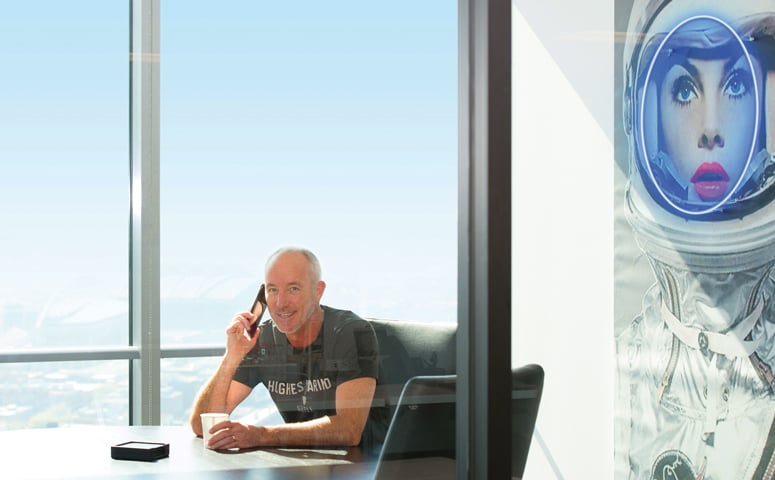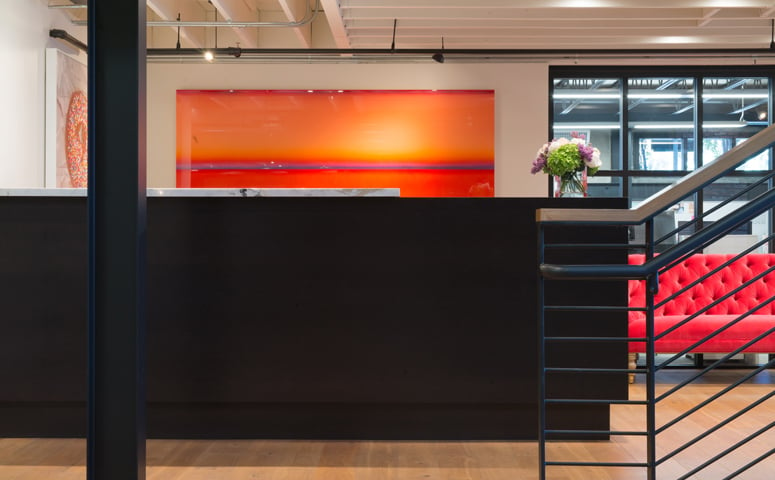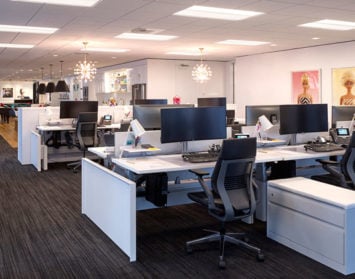By Nic Willis
Last year, we wrote about common open office issues and ways to alleviate them. We discussed density as the main culprit, and careful planning and consideration as a solution to those issues. Today those same tips are just as applicable in solving for the current concern of our time, social distancing in the workplace.
Our Planning + Design team believes that assessing the future office environment needs to be contemplated in phases: immediate needs, first year planning, and “future,” next-gen planning. Even before immediate needs, most companies are looking for temporary solutions that don’t cost a lot to implement, and we are here to help. We believe science and design will work concurrently to solve the current issues we face in going back to the office, but what will be immediately necessary is to make common sense decisions about our work environment. Here are eight ways to create a safe work environment and help reduce as much concern as possible as team members slowly begin to return to the workplace.
1. Provide a flexible work-from-home (WFH) policy and stagger your office hours.
In many ways, work from home policies have been successful, from improving our personal well-being without fears of being exposed to the virus to benefitting the environment by reducing pollution causing traffic. In addition, if schools and childcare centers don’t immediately open back up, working parents will require the flexibility to continue working from home. Staggering employees’ working hours and continuing work-from-home policies are the easiest ways to create space in the office, but for WFH to be effective in the longer term, many companies will need to consider expanding their networking and security features, training team members on basic hardware troubleshooting, and assisting with personal workspace needs.
2. Understand how headcount changes have impacted your space.
Many companies that survive this pandemic will have laid off a percentage of their workforce, and in those office spaces there will be plenty of room to spread out. You may find that just by reorganizing your seating chart you are able to comply with social distance guidelines. By placing teammates at every other desk at least six feet apart, and by shifting desks and offices around you will be able to allow more distance in between team members. We also encourage businesses to consider how much area will be required for social distance needs before deciding to consolidate your real estate.

3. Reconfigure your existing furniture.
If you purchased your office furniture from a national manufacturer, it is highly probable that your workstation furniture can be reconfigured. For example, the furniture company Knoll created a guideline for effective partitioning of their workstation furniture by adding panels. It’s likely that many other manufacturers are doing the same, so be sure to investigate!
4. Store the chairs.
We are seeing that reinforcing social distance policies demands effective physical environmental messaging. For example, in conference rooms and collaborative areas, remove seating options. Prepare your space in a way that achieving proximity is inconvenient. Store those chairs for a later date though–we think you will need them again someday!
5. Remove the snacks.
We cannot imagine a world where offices do not supply coffee although we’re sure they exist! In the short term, we need to eliminate temptations for people to interact with common area surfaces. Removing communal snacks is a simple way to eliminate any cross-contamination, and your teammates will be sure to understand as they will most likely be weary of eating shared snacks anyway!

6. Limit the visitors.
By outlining a policy to limit guests, your clients will understand and likely appreciate your measures to keep your team and your clients safe. If you must have client meetings in your space, schedule them earlier or later in the day before traditional working hours to minimize as much contact as possible with your team to outside visitors.
7. Keep it human.
Most of us are sensitive about our interactions with others during this time, but a world where we don’t physically interact is a world most of us would not want to consider. It was only a few months ago that some companies greeted their visitors with hugs! Today we need to be vigilant in our approach, while also keeping in mind that nothing is forever. Sooner than later we will return to many of our former habits, as society has done after every crisis. For better and worse, we have a forced opportunity to challenge our assumptions and experiment with new strategies. We are excited to see what positive changes will come from rethinking our work environment!
8. Enlist help!
Your company may face challenges in getting business back to normal, and with our Physical Distancing Space Analysis services, we are here to help. We’re experts in analyzing and interpreting office space needs, so please reach out if we can be a resource at all. We would love to hear from you!
While this is an unprecedented time in our history, we do look forward to the days when we can all work together again. In the coming weeks and months where team members slowly return to the office, by following these tips we can assure you that your team will feel cared for, considered and appreciated.
Nicholas Willis is interior planning director at Hughes Marino, a global corporate real estate advisory firm that exclusively represents tenants and buyers. Contact Nicholas at 1-844-662-6635 or nicholas.willis@hughesmarino.com to learn more.










